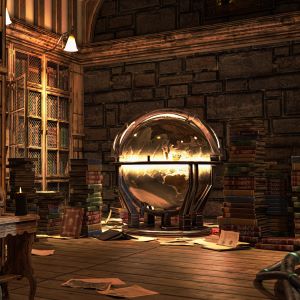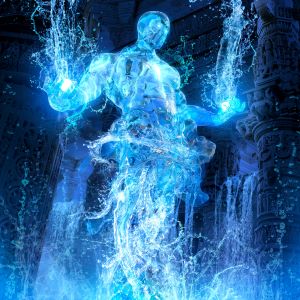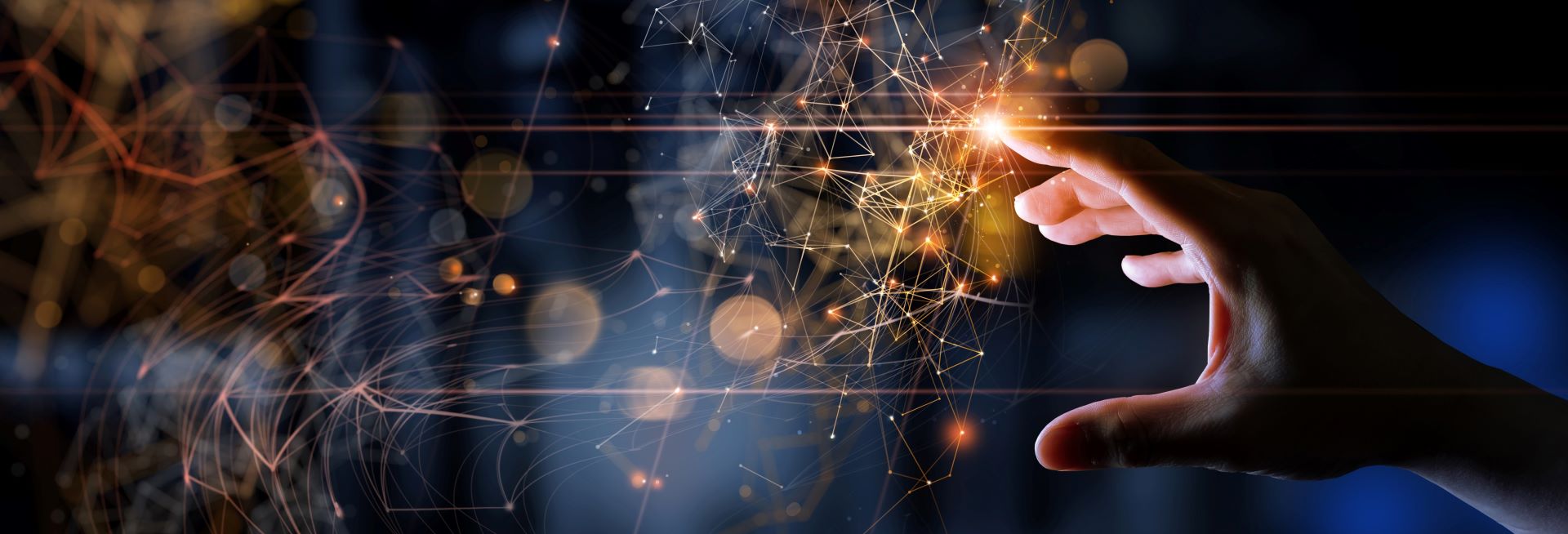The Basics of Magic
What Magic Is
Magic is loosely defined as the quality of what is now to become what is not yet, in other words, magic is the potential found in the now to become something else. What exists in the now, is reality. What could be in the future is magic. This definition is useful to living things because it allows them to proactively take action in the present to affect outcomes in the future - and to sapient beings in particular because is allows them to effect immediate outcomes that would otherwise take extreme effort and time to produce - if these outcomes were possible at all. Of course, like everything else in the universe, the ability to effect the future is costly and limited, and magic as a capability to effect change is no different. Some beings have a natural facility to effect change through magic means, while others have no abilties in this area at all. What makes magic different from other means of effecting the future? After all, someone might decide to drive future benefit to themselves by choosing to plant crops or raise herd animals for food, thus increasing the likelihood that they will survive a harsh winter. Perhaps a hunter develops a way to preserve meat, or develops a superior hunting weapon leading to an improved probability of feeding themselves and their dependents. Or a parent pays a master to apprentice their child into a profession, assuring the future ability of the child to become self-sufficient. All these effect the future, but are also clearly not magic. A tighter definition of the term magic is "The quality of possibility that is inherent in matter and the states of matter that can be collected and harnessed to effect rapid change in the universe through release and direction of that possibility resulting in an end state that would not otherwise occur." Key distinctive elements of this definition is the timeframe (rapidity) and the difference from natural outcomes. Magic itself is found in everything that forms part of the material plane whether it is made of physical stuff (or matter), or is associated with the state of physical matter. Magic can be separated from "matter" such as stone or water, or "states" such as fire or cold or wind.Modern Theories of Magic
While the practice of magic in Arrhynsia is quite ancient, reliable outcomes from magic use have only been possible with the development of modern magical theories, principle amongst them the theory of affinity first formulated by Linus Dalton of the human Northern Kingdom. The theory of affinity postulates that magic has a state revealed by it's source and characterized by two measureable features, inertia and correspondence. Inertia is the predisposition of the magic to effect change or be extracted or used at all. Correspondence is the willingness of the magic to be or do what the magician is directing it to be or do. At first glance, these two factors may appear the same, but they are not at all. Some tyes of magic are extremely reactive with very low inertia - for example wind magic has a very low inertia. It is very easy to strip from it's native substance (and state), which is why magical creatures such as faires who do not have a mageiakysti use wind (or air) magic exclusively. Stone magic on the other hand is diffcult to separate from it's source matter and is not easy to work with or direct. Correspondence is different - it expresses what the magic wants to become. Wind magic, for example, can be used for many different applications, but it resists becoming or effecting very permanent changes. It is quite tricky to get exactly the desired effect with wind magic as the magic will often go astray and end up creating unintended effects. Stone magic is practically the opposite. It tends to be very easily used to creating permanent effects, but can be extremely tricky to use to create an effect that is transitory in nature.The Practice of Magic
Magic is practiced in four different fields or schools: sorcery, wizardry, divinity, and elemental magic. While in general, magic theory applies to all, they are distinct in their accessibility to different practitioners and the implications of casting and use.Sorcery
Sorcery is the type of magic practiced by those who have a magei system, and cannot be practiced by those who do not have these specialized organs. This system allows them to use magic, collecting, storing, directing, and releasing magic with no more tools than their own bodies and thoughts. Races who have a hereditary predisposition to be able to work magic this way include those of elven blood, dragons and dragonborn. Innate magic working is found in a small minority of the population of other sapient races native to Arrhynsia including haflings, dwarves and orcs. In addtion, some native races, commonly known as the fey, have persistent and constant innate magic working abilities necessary to their survival, but these are more limited in the scope of their power as they lack a mageíaktítoras, the organ that regulates and stores magic in the body. Sorcery is instantaneous, requires little preparation and few if any tools, so it's flexibility is unmatched. The power of spells cast by a sorcerer are limited by the sorcerer's bodily capacity to hold, process, and direct the magic that their body collects which can be of any magical temperament.
2081661043 by Seeker Stock Art
Wizardry
Wizardry is a type of magic that can be used by anyone regardless of their intellect or native magic working abilities through embuing magic items with predetermined spells. It is a branch of magic invented by Humans who do not have magei systems. Most widespread use of wizardry revolves around the manufacture of magic items that save labor, create specific desired effect, or perform military actions. As a tool that is available to all, it is incredibly useful and widespread in it's effect on the world. Wizardry can be much larger in power and scope than sorcery, not being limited by the spellcaster's body and mind to hold, process and direct magic. Unfortunately, casting a wizard's spell requires forethought, access to an industrial base and natural resources and huge amounts of planning, preparation, time and work to produce the desired items. This work can be done well before the magic is used and need not be done by the user at all, but failure to correctly anticipate the need for a particular type of spell will mean that the user is unprepared when need for the spell arises. Wizardry spells are exceedingly particular in how they execute, failing frequently (sometimes catastrophically) if not performed correctly. This is why virtually all magic items are sealed so that they cannot be modified.Divine Magic
There are also fields of magic which are focused on the state of divinity, which also has the quality of possibility, but is gatekept by a divine entity. As such, divine magic is only practiced by those who have taken on an obligation to follow a particular patron diety since spellcasting for the practioners of divinity magic is basically prayer. Divine magic will usually operate within the context and rules of "normal" magic, but is not constrained to operate within that framework. To understand the rules, possibilities and constraints of divine magic, one must consult with the diety or power that owns or grants it.
2121885545 by Warm_Tail



Comments